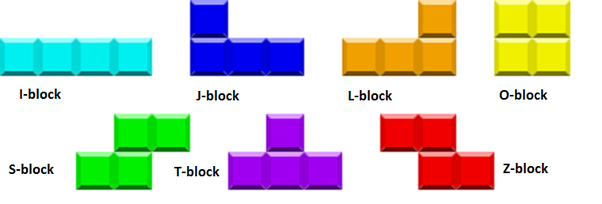With the recent advent of Tetris 99, people are rediscovering the enticing and addictive gameplay that has made the puzzle titan among the world’s most popular and enduring games over the years. Along with other recent twists like Puyo Puyo Tetris and Tetris Effect, the franchise has found new ways to invigorate the classic formula with twists, turns, and T-spins.
Yet there is something every modern Tetris game is missing. Indeed, every successor to the Game Boy classic is missing something that that particular iteration Russian masterpiece overflowed with — story. For while all Tetris games have managed to retain the catchy soundtrack, minimalist visuals, and simple-to-learn, hard-to-master gameplay of GB Tetris, none have been able to match that game’s narrative, which stands to this day as one of the finest achievements not just in video game storytelling, but as an artistic triumph that surpasses all boundaries of media, nationality, and sensation to speak directly to the human soul. There’s a reason GB Tetris was the one to surpass its previous milquetoast entries and send the franchise catapulting to the top of the international charts — because it was the first to flesh out its plot beyond the bare bones and embrace inner conflict, lost aspirations, and existential dread.

GB Tetris stars the T-block, an erstwhile drifter looking for a place to fit in within society. While later games have turned the T-block into an overpowered Mary Sue whose hyper-intelligent plays and unending wit allow for no tension, he was originally a humble and relatable protagonist — awkward yet versatile, not excelling in any one area but quick to assist and help out. His search for identity and meaning among his compatriots is surprisingly touching and personal, and by game’s end one truly feels that he’s grown to not just adhere to his given role but carve his own path of life.
Of course, T-block’s journey is bolstered by one of the greatest supporting casts ever seen. There are the fan-favorite L-block brothers, charming upstarts whose flexibility and easygoing natures allow for a lot of hilarious dialogue. The base L-block is so popular that he won GameFAQs’ Character Battle back in 2007, and his brother, nicknamed “the Waluigi-block,” has his own hardcore fanbase (fun and elucidating fact — “L” in Russian is pronounced “Karamazov,” making the duo a dedicated allusion to the Dostoevsky masterpiece). There are the S and Z-blocks, sisters who mask deep seated anxieties with elaborate facades — the former as a plucky, carefree girl who hides a bitter resentment of other people, the latter as an abrasive, biting woman who simply doesn’t want to be hurt. And who could forget the ace herself, the I-block, swooping in at the last second to save the day, a guiding hand to T-block and the others who nonetheless deals with her own crippling guilts and insecurities?

But even these pale in comparison to the Square-block, who to this day remains the most morally ambiguous and tragic character I’ve ever seen in a video game. Starting off as a nerdy, clumsy friend to T-block, S-B begins a long downward spiral of depression and inadequacy, leading to a dark turn where he betrays the rest of the party for no other purpose than his own maddened sorrow. A delicate character full of nuance, at once pitied and scornful, sympathetic and monstrous, enough to make Shakespeare quake in his boots at the thought.
Of course, the mere character writing wasn’t the only thing that GB Tetris had going for it — the game was a pioneer of ludonarrative resonance, expertly weaving and expressing character traits through the gameplay. You truly get a sense for each of the blocks’ personalities as you watch them slide into place, and understand their frustrations and anxieties when you make a misplay. This was before the advent of “holding” blocks as well, which allowed for a much more compelling emergent narrative to take place, as you can only work with the blocks given to you.
The story reaches for deep metaphorical levels as well. Moments of quiet seclusion make the player reflect on why they are attempting to clear the lines, and what the clearing of the lines represent. Urban legend has long told of the game as some sort of elaborate metaphor for the futility of labor within Soviet communism, but I find the theme much more subtle and universal than that — the never ending struggle for completion, only to realize that your efforts are wiped away at a moment’s notice, the finishing of one task merely paving the way for the start of another. Even if you happen to be so talented as to reach the rocket ship ending and watch it careen into the atmosphere, you’re left with a hollow, reflective feeling, as you question whether the labor was worth it.

There are a host of other decisions I could delve into the genius of — like the minimalist decision to use only a grayscale color palette, the subtle visual differences between the blocks, or the underlying hints at S-block’s alcoholism in early scenes — but one part of the game sticks out above all else, when I-block offers a desperate speech of encouragement to T-block:
“I… I understand. More than you could ever know. The pain of not fitting in, of being ostracized for what you are… do you think I was always this respected? In the beginning, when all was empty, I was shunned, shunted off to the side and told ‘my time hadn’t yet come’… it was so frustrating that I wanted to scream. When they finally called for me, I wanted nothing more than to run away. To disappear forever. But I knew I couldn’t do that. People need you, T-block, more than you yourself may even realize. Because no matter your shape, size, or color, there’s a place for you in this world!”
I recalled crying on 12 different occasions during that monologue alone. While other Tetris followups would attempt their own spins on the tale, none would match the writing, tenderness, and majesty of Tetris on Game Boy. It was a tour de force that inspired auteurs like Hideo Kojima and Yoko Taro for decades to come, propelling the series to become the greatest selling video game ever made and one of the most notable cultural landmarks of the late 20th century. Alexey Pajitnov is among the other great Russian literacists, a master of human drama and stunning pathos. And the medium would not be the same without him.

All in all, Tetris for Game Boy is a game of universal themes — the struggle for acceptance both from others and yourself, the cyclic futility of human works, and the inability for certain types of people to fit together. Decades later it remains untouched among its peers and successors as an example of video game storytelling. And I can only hope that someday, someone finds the artistry to match its brilliance.
Tetris blocks image source: Quora
Leave a Comment


